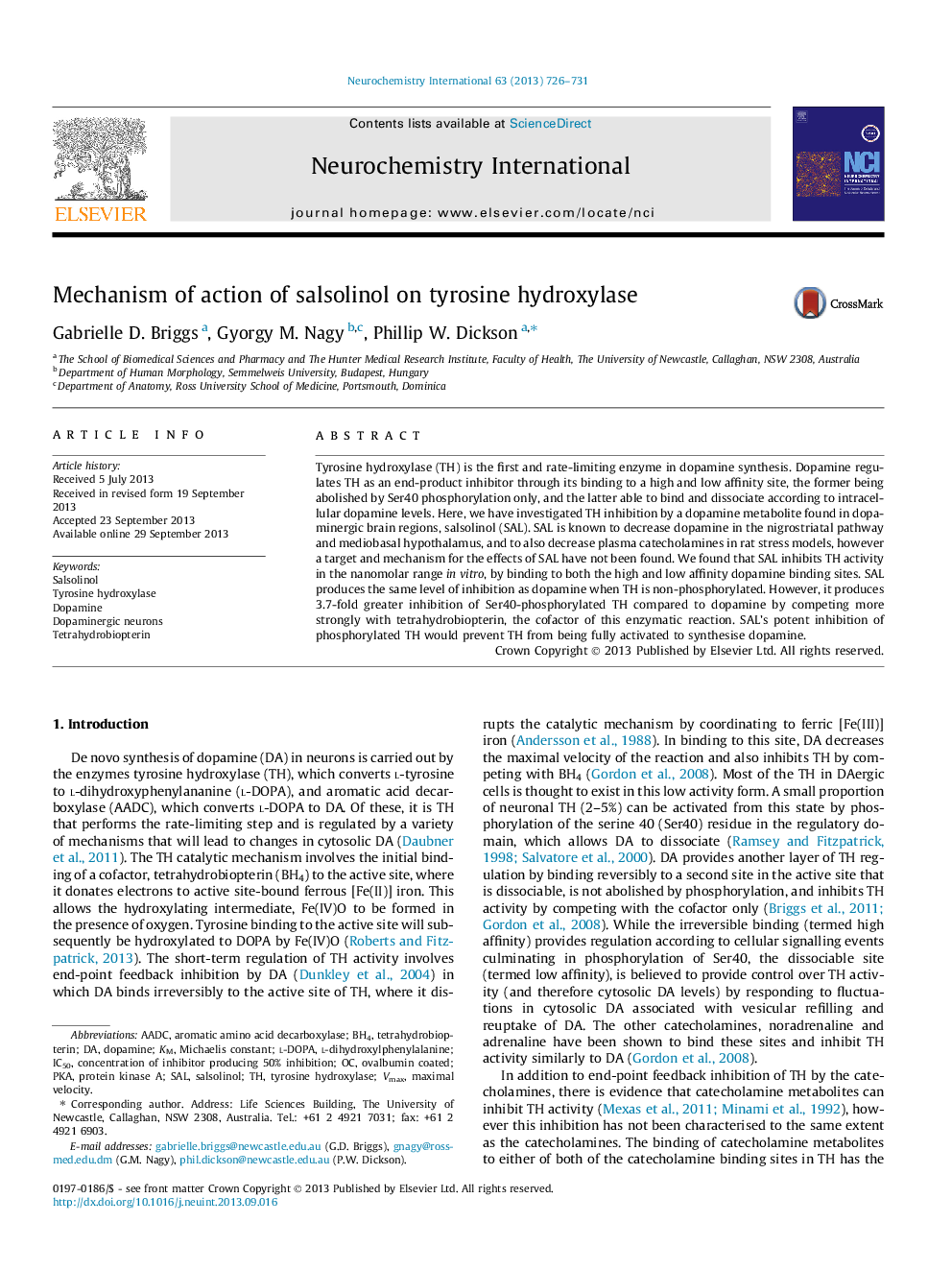| Article ID | Journal | Published Year | Pages | File Type |
|---|---|---|---|---|
| 10958029 | Neurochemistry International | 2013 | 6 Pages |
Abstract
Tyrosine hydroxylase (TH) is the first and rate-limiting enzyme in dopamine synthesis. Dopamine regulates TH as an end-product inhibitor through its binding to a high and low affinity site, the former being abolished by Ser40 phosphorylation only, and the latter able to bind and dissociate according to intracellular dopamine levels. Here, we have investigated TH inhibition by a dopamine metabolite found in dopaminergic brain regions, salsolinol (SAL). SAL is known to decrease dopamine in the nigrostriatal pathway and mediobasal hypothalamus, and to also decrease plasma catecholamines in rat stress models, however a target and mechanism for the effects of SAL have not been found. We found that SAL inhibits TH activity in the nanomolar range in vitro, by binding to both the high and low affinity dopamine binding sites. SAL produces the same level of inhibition as dopamine when TH is non-phosphorylated. However, it produces 3.7-fold greater inhibition of Ser40-phosphorylated TH compared to dopamine by competing more strongly with tetrahydrobiopterin, the cofactor of this enzymatic reaction. SAL's potent inhibition of phosphorylated TH would prevent TH from being fully activated to synthesise dopamine.
Keywords
Related Topics
Life Sciences
Biochemistry, Genetics and Molecular Biology
Cell Biology
Authors
Gabrielle D. Briggs, Gyorgy M. Nagy, Phillip W. Dickson,
